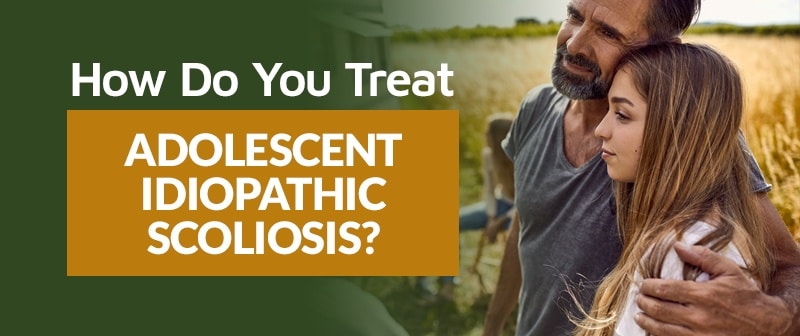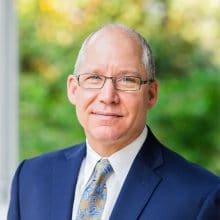
Adolescent Idiopathic Scoliosis (AIS) is one of the most challenging stages to treat when treating patients. Generally speaking, medical professionals attempt to promote recovery before puberty, though this isn't always possible.
So, how do you treat Adolescent Idiopathic Scoliosis? You can treat Adolescent Idiopathic Scoliosis with specific exercises, chiropractic adjustments, 3D back braces, screenings, and surgical procedures. Caught early in its tracks, you can also treat AIS with less intense tactics.
The rest of this article will examine the ways that doctors treat AIS, as well as look at common activities that can cause AIS or exacerbate an existing case.
AIS often presents with a prominent 'S' or 'C' curve that becomes quickly noticeable as a child enters puberty. Adolescence, or the age group ranging anywhere between 10 through 19, tends to exacerbate spinal curvature issues because the spine and body are growing swiftly.

Many people think traditional back braces are the answer to AIS. However, this is no longer a recommended treatment method.
When scoliosis is still developing in a younger person, traditional back braces have a chance to worsen the symptoms. This is because the spine's movement is limited when a brace is worn, which can restrict the growth process. Restricting growth can lead to severe pain, height reduction, and misalignments throughout the body.
These days, medical professionals often suggest chiropractic adjustments, specific sets of exercises and stretches, as well as 3D braces in the most severe cases. 3D braces are unlike traditional braces in the sense that they're designed to custom-fit the patient to allow their spine to 'breathe' and move as it needs to.
The most common recommended treatment is to perform a series of exercises and stretches. When repeated regularly, specific movements can lessen the impact of AIS and force the spine to follow a more normal growth pattern.

If a patient is treated when their Adolescent Idiopathic Scoliosis is considered mild (around 10 degrees) or moderate (25 to 40 degrees), chiropractic adjustments can often bring them relief. These adjustments can relieve stress on the spinal column and the surrounding muscle tissue in the area.
When a chiropractor notices a case of AIS that is too severe to treat through minor adjustments and massages, they typically refer the patient to a medical professional who specializes in treating AIS. This is because adjustments can be problematic in high-risk patients with a spinal curvature over 40 degrees.
The worst way to take on AIS is to try to self-diagnose and treat it at home without any professional help. Pain medication found in stores only masks the problem, and the lack of proper treatment will only result in a much more severe case as the patient gets older.
The only way to properly treat Adolescent Idiopathic Scoliosis is by going to a medical professional and receiving advice based on your unique circumstances and the severity of your AIS.
The problem with classifying a case as 'idiopathic' is that the terminology suggests that the cause is unknown.
Because scoliosis often develops through several unpredictable circumstances, up to 80% of cases are referred to as idiopathic. However, we can narrow down the most common causes into three categories.
The first possibility, and perhaps the most common cause of AIS, is a hormonal surge.
When a child enters adolescence, or when puberty starts, their body produces hormones at the highest rate of any time during their life. This rush of hormones causes a person to grow quickly, which is why the average person starts to look taller and older as they enter adolescence.
Sometimes this surge in growth can cause the spine to grow with a curve. This curve can range from 5 degrees to more than 10 degrees - the higher the curvature, the more severe the scoliosis is.
If a person has a slight spinal curvature, this stretching and growing can cause an irregularity in the spine. Since the spine is the center of every joint on the body, it's easy for a patient with AIS to notice hormone-induced changes.
The second possible cause of Adolescent Idiopathic Scoliosis is an upper cervical instability. An upper cervical instability occurs in the upper neck, where the spine meets with the base of the skull. An imbalance in this region can cause a hunchback, as well as a worsening case of scoliosis.

Another cause of an upper cervical instability is ligament damage in the upper neck. When someone develops ligament damage, especially when their body is still going through dramatic changes, the spine attempts to account for the difference in balance. The spine's attempt to fix things can be a nearly immediate cause of AIS.
Here's how it works: when the upper neck becomes misaligned, the spine tends to go with the path of least resistance.
In this instance, it would follow the S-shaped curve of the neck that the ligament damage has caused, thus worsening the alignment issue. And as the spine grows through the aforementioned hormonal rush, this misalignment can get worse over time.
The final common cause of Adolescent Idiopathic Scoliosis is a family history of AIS.
Scoliosis tends to run in the family, which means that it's not rare to see multiple generations develop a severe case of AIS. If your older relatives had scoliosis, you might be susceptible as well. So if you're aware of such a history, you should consult a medical professional to discuss the possibility of your children contracting scoliosis as they enter adolescence.
While the causes mentioned above are the most common factors that contribute to a patient developing Adolescent Idiopathic Scoliosis, there are certainly others. After all, the word 'idiopathic' tells us that a multitude of unknown factors may contribute to the problem.
As always, the best way to find a solution is to seek medical advice.
While we've already discussed the common issues that lead to an inevitable AIS diagnosis, children and adolescents can still develop the condition through various sports and other risk factors. A slight curvature can rapidly worsen through intense moving or poor posture from numerous activities.
Activities like gymnastics that require incredible flexibility and quick movements can worsen a case of AIS. This is because the spine is still trying to grow, but it can't follow the correct path when it's being stretched and flexed every which way. The falls that come with gymnastics training can also cause harm to the spine.
While casual swimming shouldn't cause spine curvature issues, aggressive swimming that involves fast exercises can cause problems for people who have spinal curvature.

This is usually because our bodies aren't used to such strenuous activities at a young age, especially not the intense movements that come with aggressive swimming. Multi-hour sessions with a variety of different swimming styles are most likely to exacerbate spinal issues.
Volleyball is another high-impact sport that can cause or exacerbate AIS. Jumping up and down for hours on end causes relentless pressure on a damaged or misaligned spine, which can quickly worsen any AIS symptoms. Volleyball also has unique movements that can move the spine in abnormal ways, which isn't great for adolescents with spinal issues.
Adolescent Idiopathic Scoliosis can be caused by a variety of issues, including a hormonal imbalance, upper cervical instability, and genetics.
Some of the most effective treatments for Adolescent Idiopathic Scoliosis include specific exercises, chiropractic adjustments, and back braces.
Although some teenagers are more prone to this degenerative condition than others, preventative measures and consistent therapies can greatly reduce the severity of any instances of Adolescent Idiopathic Scoliosis.
If you or someone you know is suffering from Adolescent Idiopathic Scoliosis, contact a doctor today.
“The author’s views are his or her own and may not reflect the views of CLEAR Scoliosis Institute.”

CLEAR provides a unique and innovative way of understanding scoliosis. Sign up to receive facts and information you won’t find anywhere else.
